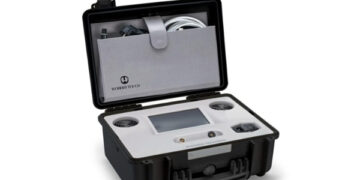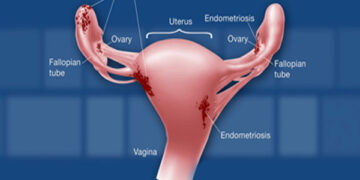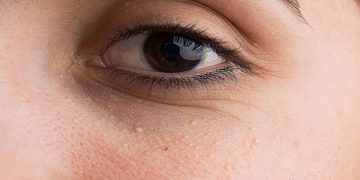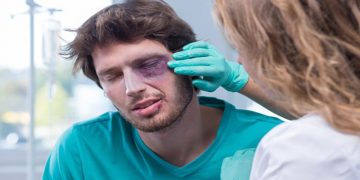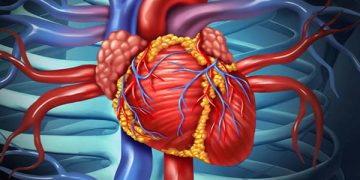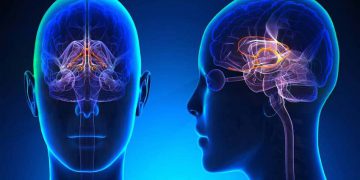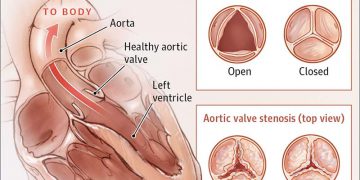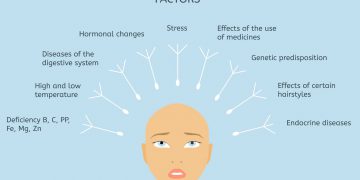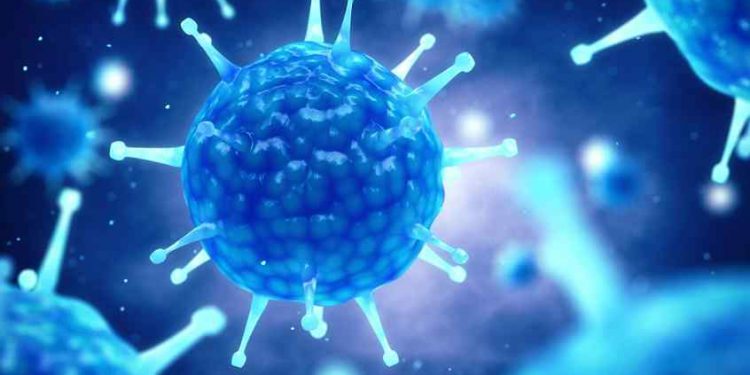Coronavirus is a severe virus disease characterized by the most affected respiratory system and the gastrointestinal tract. Coronavirus is a zoonosis infection and can be transmitted from animals to humans.
What is Coronavirus or Etiology of the Coronavirus?
Coronavirus infection is caused by RNA genomic viruses of the genus Coronavirus. The coronavirus is surrounded by spines, which are pierced by sparsely spaced spikes that have the structure of thin necks and spherical heads located on them, which outside looks somewhat similar to a crown.
For humans, respiratory and intestinal corona-viruses are pathogenic. The most common form of respiratory disease, which is usually diagnosed as an acute respiratory viral infection.
Viruses are unstable in the environment. Pathogens cannot be transmitted through objects, door handles, parcels, products (bananas, tangerines, meat, fish, etc.). They instantly die at temperatures above 50 degrees, are destroyed by the action of chloroform, formalin, ethyl alcohol or ether. Corona-virus tolerates freezing well.
Coronavirus infection and development mechanisms
The causes of corona-virus are mutations that result in a new type of virus. A sick person is usually a source of corona-virus infection. At the same time, the period of contagiousness is indefinitely long.
The source of corona-virus can be wild and domestic animals, monkeys, birds, snakes, and other animals. The source of a new type of pathogen (2019-nCov) was, presumably, bats.
The virus is transmitted by airborne droplets, airborne dust, and fecal-oral routes. Transmission factors include discharge of the nasopharynx, vomit, feces of birds, animals, and sick people.
In humans, the susceptibility to corona-virus is very high, all age groups are susceptible to the disease. Antigenic heterogeneity of viruses causes a significant frequency of reinfection with pathogens of other serological types.
To date, the pathogenetic mechanisms of the development of corona-virus infection have not been sufficiently studied. The entrance gate to the infection is the mucous membrane of the upper respiratory tract. When affected by the 2019-n Cov pathogen, infection rapidly spreads to the bronchi and lungs.With the fecal-oral transmission mechanism, the disease manifests itself affecting gastrointestinal tract.The disease is accompanied by the synthesis of antibodies that do not guarantee protection against re-infestation.
Clinical manifestations of Coronavirus
For most corona-virus infections, the incubation period is limited to 2-3 days. However, for the 2019-nCov corona-virus, this period can be from 1 to 14 days (an average of 10 days).
Throughout this period, a person can infect others. The disease proceeds, most often, like normal flu, para-influenza, or any other acute respiratory infection with all their characteristic symptoms.
Characteristic symptoms of corona-virus in the respiratory form:
- pain when swallowing, sneezing;
- rhinitis;
- headache;
- cough;
- manifestations of hypoxia;
- temperature rise;
- chills;
- muscle pain.
At the initial stage of infection with a new type of pathogen, the signs of corona-virus coincide with all the signs of a common cold: dry cough, weakness, fever. Some patients have eye damage (conjunctivitis) and diarrhea. If the disease proceeds in a mild form, pneumonia does not develop and the entire pathological process is limited to mild symptoms. In such cases, the temperature may rise slightly or generally remain within the normal range.
In severe forms of the disease, the patient’s condition rapidly worsens, a very high temperature rises, an unproductive persistent cough appears, and respiratory failure develops. The patient’s condition worsens significantly if there are concomitant diseases.
Coronavirus Signs of the disease in children
In children, the infection can spread to the lower respiratory tract, causing chest pain when breathing and shortness of breath. There is inflammation of the larynx, cervical lymphadenitis and dry wheezing in the lungs.
Signs of the course and complications
In a typical corona-virus infection, complete recovery usually occurs within 5-7 days. The viruses mers and sars cov, as a rule, do not cause complications and the prognosis of the disease is favorable.
If the disease is more severe, it can take two or more weeks to recover.
In severe cases, the consequences of corona-virus are extremely unfavorable:
- severe intoxication;
- signs of pulmonary edema;
- progressive acute respiratory failure;
- physiologic failure.
The prognosis for this course of the disease is unfavorable.
Diagnostics of Coronavirus in Human Beings
It is not possible to diagnose corona-virus only by the clinical picture since the symptoms of corona-virus are completely identical to the symptoms of other respiratory infections. Test systems can quickly determine the presence of corona-virus in the body.
The diagnosis of corona-virus infection can only be confirmed by laboratory diagnostic methods:
- virus isolation using RT-PCR and ELISA;
- detection of its antigen in epithelial cells of the nose using enzyme-linked immunosorbent assay;
- determination of titers of specific antibodies.
Mucus, sputum, blood, urine, etc. are the material for the study.
If you suspect the development of pneumonia, the doctor prescribes radiography.
Differential diagnosis of corona-virus is carried out with rhinovirus infection, MS infection, bacterial and viral gastroenteritis.
Treatment of Coronavirus (COVID-19)
Treatment of mild or moderate corona-virus includes symptomatic treatment – drugs to lower the temperature, antitussive drugs, colds, etc.
The treatment of severe forms of corona-virus is based on drug therapy.
Pharmacotherapy of corona-virus:
- antiviral drugs;
- specific immunoglobulins;
- corticosteroids.
Corticosteroids are prescribed for progressive worsening of the clinical picture, prolonged lymphopenia, and a decrease in blood oxygen saturation. With the development of severe complications, the use of antibiotics is indicated, as well as mechanical ventilation. Good results were obtained when heavy patients were given blood plasma from patients with atypical pneumonia.
Preventive treatment of Coronavirus
To date, there are no specific measures for the prevention of corona-virus – a vaccine has not yet been developed. When the slightest symptoms of the disease appear, it is recommended to be at home. During a period of high morbidity, it is necessary to limit contacts with surrounding people as much as possible, to avoid crowds, not to visit crowded places.
Corona-virus Prevention Measures:
Do not visit regions where coronavirus infection is most common;
- wear personal protective equipment (masks);
- wash hands regularly;
- limit contacts at close range;
- walk more in the fresh air in parks, squares, away from people;
- strengthen local immunity (observe the temperature regime in the room – 18-20 degrees, maintain the necessary humidity – from 40 to 60%);
- ventilate the premises more often;
- moisturize the mucous membranes of the upper respiratory tract with saline solutions.
Governments around the world are taking tougher measures to prevent the spread of corona-virus: airport checks are becoming commonplace. In Wuhan, China, residents are not allowed to leave their neighborhoods. A check of arriving foreigners has already revealed the carrier of the infection without symptoms in Egypt.
A foreigner was found sick with Covid-19 corona-virus who did not have symptoms of the disease.
Now he and everyone who spoke to him were quarantined for 14 days. Egypt became the first African state where the corona-virus was discovered.
In India, people who fly from Thailand, Singapore, China and Hong Kong are checked at airports, and now they will also test people who have arrived from Japan and South Korea.
According to the latest WHO data, the number of people infected with the new type of corona-virus 2019-nCoV has reached 49,053 people – of which 48,548 are in China. 1,381 died as a result of infection.
Meanwhile, according to the National Health Commission of the PRC, by February 15, 67 102 cases of infection were detected in the world, of which 66 492 were recorded in the republic. 1,526 people died of a new disease, 8,141 were cured.
About the author: Melisa Marzett is freelancing and traveling for more than 5 years now working for smart essay at the time, she provides articles, which are interesting for her audience. She enjoys simple things in life such as shopping, cooking, sports, and fashion. She has a dream to publish a book one day, which would become a bestseller.




